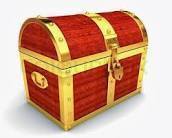Israel

Country ISO code: IL
Official language: Hebrew
Language ISO code: he
Current official currency: New Israeli Shekel
Current currency ISO code: ILS
Complete Financial History of the State of Israel
1. New Israeli Shekel (ILS)
-
ISO Code: ILS
-
Singular name: Shekel
-
Plural name: Shekels
-
Monetary subdivision: 1 Shekel = 100 Agorot
-
Fraction name (singular): Agora
-
Fraction name (plural): Agorot
-
Initial production date: September 4, 1985 (official introduction)
-
Final production date: Still in production
-
Initial circulation date: January 1, 1986
-
Final circulation date: Still in circulation
-
Mint: Israel Mint (located in Ramat Gan)
-
Issuing bank: Bank of Israel (Central Bank)
-
Minted coin denominations: 10 agorot, ½ shekel, 1, 2, 5, 10 shekels
-
Printed banknote denominations: 20, 50, 100, 200, 500, 1000 shekels
2. Old Shekel (1980–1985)
-
ISO Code: Not official (replaced)
-
Singular name: Shekel
-
Plural name: Shekels
-
Monetary subdivision: 1 Shekel = 100 Agorot
-
Initial circulation date: February 24, 1980
-
Final circulation date: December 31, 1985
-
Context: Introduced to replace the Israeli Lira but suffered from hyperinflation, leading to the introduction of the New Shekel.
3. Israeli Lira (1952–1980)
-
ISO Code: ILP (former)
-
Singular name: Lira
-
Plural name: Liras
-
Monetary subdivision: Initially 1 Lira = 1000 Prutot, later 100 Agorot
-
Initial circulation date: June 1952
-
Final circulation date: February 24, 1980
-
Context: Replaced the Palestine pound after the establishment of Israel. The name “Lira” derived from Latin, later replaced by Shekel to reflect Hebrew identity.
Economic Historical Context
-
Israel initially used the Palestine pound until 1952, when the Israeli Lira was introduced.
-
The Lira experienced frequent devaluation during the 1960s and 1970s.
-
In 1980, the Shekel replaced the Lira but faced hyperinflation in the early 1980s.
-
The hyperinflation crisis led to the 1985 monetary reform introducing the New Shekel, replacing the old Shekel at a rate of 1000:1.
-
Since 2003, the New Shekel has been a freely convertible currency on international markets, stable and widely used in domestic and foreign transactions.
Mints / Production Locations
-
Coins are minted at the Israel Mint in Ramat Gan.
-
Banknotes are printed by specialized international companies (Switzerland for banknotes, South Korea for coins, per recent data).
Designs / Symbols on Coins and Banknotes
-
Coins and banknotes feature prominent Israeli historical figures, local flora and fauna, national symbols, and cultural elements.
-
The New Shekel symbol: ₪ (a combination of the Hebrew letters ש and ח, for shekel chadash).
Print Runs / Honorees and Signatories
-
Print runs vary by series and economic needs, managed by the Bank of Israel.
-
Honorees include figures such as David Ben-Gurion, Chaim Weizmann, and other Israeli leaders and poets.
-
Banknotes bear signatures of the Governor of the Bank of Israel and the Finance Minister.
Curiosities / Commemorative Coins
-
Israel issues commemorative coins for national, cultural, and historical events.
Current Circulation Status
-
The New Shekel is the official, actively circulating, and stable currency in Israel.
Issuing Authority
-
Bank of Israel (Central Bank)
Relevant Monetary Legislation
-
Laws and regulations of the Bank of Israel govern the issuance and circulation of the Shekel.
This report provides a complete financial history of Israel, highlighting the evolution of currencies from the Palestine pound, through the Israeli Lira, the old Shekel, to the current New Israeli Shekel, which has been stable and widely used since 1985.
 Nilton Romani
Nilton Romani
